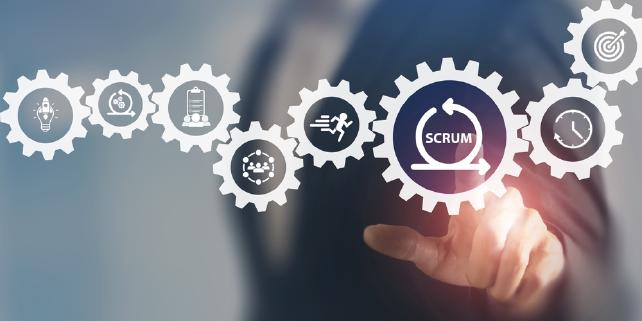How Agile Can Boost Productivity in Accounting Workflows

Leverage Scrum to optimize the accounting process
In today's dynamic business landscape, organizations across industries are embracing agile methodologies to enhance efficiency,
collaboration, and productivity. While agile principles have traditionally been associated with software development and
project management, they can also bring significant benefits to the accounting department. By adopting agile thinking,
accounting teams can streamline processes, adapt to changing requirements, and achieve continuous improvement. In this
blog post, we will explore the practical steps of transitioning to agile methodologies in the accounting process and
highlight the benefits they can offer.
1. Understanding Agile Methodologies:
Before diving
into the implementation process, it is crucial to grasp the fundamentals of agile methodologies commonly used in
accounting departments. Some popular methodologies include:
a.
Scrum: Scrum is an iterative and incremental framework that promotes collaboration, transparency, and
adaptability. By dividing work into sprints and holding regular meetings, teams can manage tasks effectively and respond
quickly to changing priorities.
b. Kanban: Kanban is a visual
workflow management system that helps teams visualize and optimize their work. With a focus on limiting work in progress
(WIP), Kanban ensures a steady flow of tasks, reduces bottlenecks, and enables efficient resource
allocation.
c. Lean: Lean principles aim to eliminate waste and
maximize value. By identifying and reducing non-value-added activities in the accounting process, teams can improve
efficiency, reduce errors, and deliver faster results.
2. Assessing the Current Accounting
Process:
To implement agile methodologies successfully, it is essential to evaluate the existing
accounting process. Identify pain points, bottlenecks, and areas where improvement is needed. Consider factors such as
communication gaps, manual data entry, repetitive tasks, and delays in information flow. This evaluation will serve as a
foundation for implementing agile practices tailored to your specific needs.
3. Introducing Agile
Concepts:
To ensure a smooth transition to agile thinking, it is crucial to introduce the core concepts
to the accounting team. Conduct training sessions or workshops to familiarize them with agile principles, emphasizing
the importance of collaboration, iterative planning, and continuous improvement. Encourage open discussions and address
any concerns or resistance to change.
4. Agile Project Management in Accounting:
Implementing
agile methodologies requires a shift from traditional project management approaches. Embrace the following practices to
enhance project management in the accounting department:
a. Define clear goals and objectives for each project or
task.
b. Break down work into manageable units or sprints.
c. Prioritize tasks based on their importance
and urgency.
d. Hold regular stand-up meetings to discuss progress, challenges, and next steps.
e.
Implement visual tools such as task boards or Kanban boards to track progress.
f. Encourage collaboration and
cross-functional communication among team members.
5. Iterative Planning and
Adaptability:
Agile methodologies emphasize iterative planning and adaptability, allowing accounting
teams to respond to changing requirements effectively. Encourage frequent reassessment of priorities and adjust plans
accordingly. Involve stakeholders to gain their input and ensure alignment with evolving business needs. This iterative
approach ensures flexibility and enables teams to deliver high-quality results within shorter time
frames.
6. Continuous Improvement and Learning:
Agile methodologies promote a culture of
continuous improvement and learning within the accounting department. Encourage team members to reflect on their work,
share feedback, and identify areas for enhancement. Embrace retrospective meetings to review completed projects,
identify successes and challenges, and define actionable steps for improvement. This iterative feedback loop fosters a
culture of learning and drives ongoing optimization of accounting processes.
By implementing agile methodologies
like Scrum, Kanban, or Lean in the accounting process, organizations can streamline workflows, enhance collaboration,
and improve productivity. The transition to agile thinking requires assessing the current process, introducing agile
concepts, embracing agile project management practices, adopting iterative planning, and fostering a culture of
continuous improvement. By embracing agility, accounting teams can adapt to evolving business requirements, deliver
higher-quality results, and stay ahead in today's fast-paced business environment.



